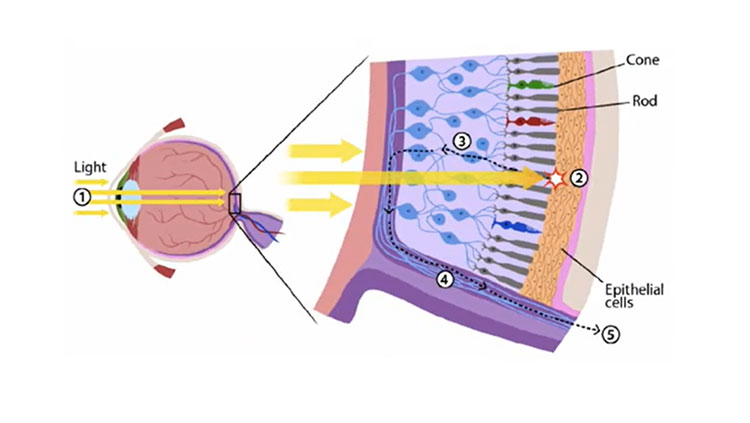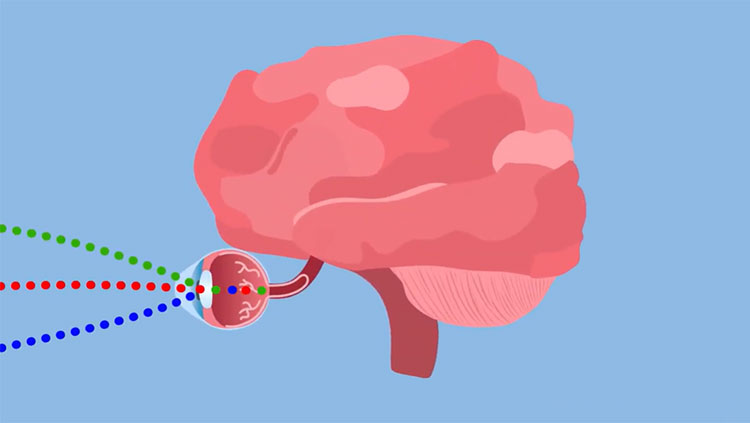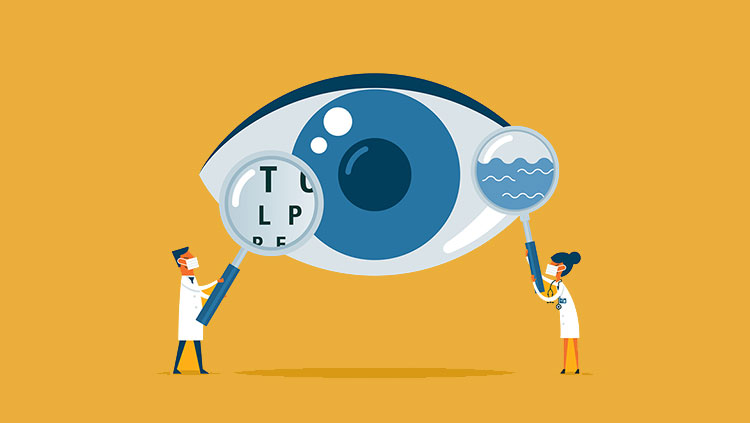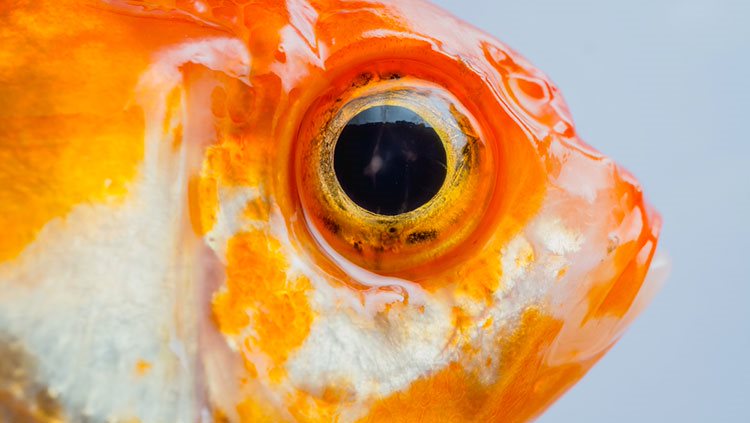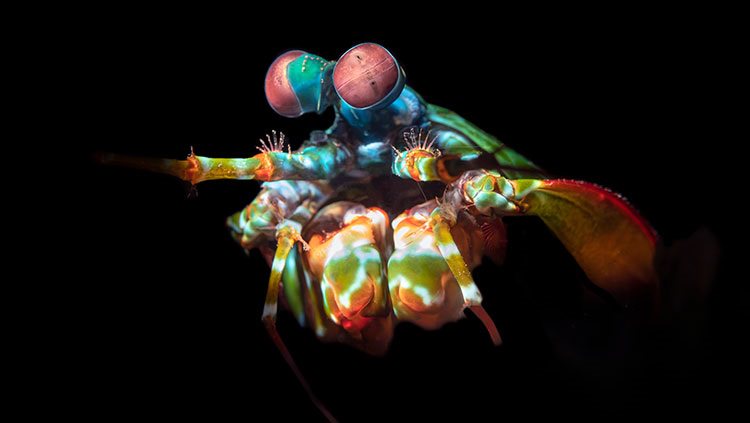The Senses — A Primer (Part I)
- Published11 Sep 2013
- Reviewed11 Sep 2013
- Source The Dana Foundation
Our senses connect us to the world. Through complex systems that begin with cells that respond to physical stimuli and send signals through a maze of brain circuits, we can know—both consciously and otherwise—what goes on around us and within our bodies.
It’s a dynamic process. The brain is not simply a receiving station for sensory signals, and what we see, hear, and feel are constantly shaped by emotions, memories, moods, and beliefs. Our sense of the world is a creation of the brain, and the same physical sensation may be experienced quite differently at different times of life, and even from day to day.
The five (?) senses
We traditionally refer to the five senses of sight, hearing, taste, smell, and touch—a schema that dates back to Aristotle. But this is a simplification. We also have sensory systems to inform us of the position of our bodies (and parts of our bodies), visceral sensations, temperature, and pain, for example.
While each sensory system is unique, they share basic characteristics and similarities of structure and function. All are apparently active at birth, for example, although they may remain in a rudimentary state for weeks or months and continue to develop through childhood and adolescence. All are laid out along the same basic neural plan: a sense organ that turns physical phenomena like light, sound, or pressure into electrical impulses, and bundles of nerve fibers to carry these impulses to the brain. Sensory data generally pass through the thalamus, a kind of switching station atop the brain stem, en route to dedicated areas of the cortex designed to process them—the auditory cortex in the temporal lobe for hearing, for example, the visual cortex in the occipital lobe for sight. Smell—the oldest of the senses—is an exception: signals go directly from receptors in the nose to the olfactory bulb, in a more primitive part of the brain.
From these primary cortices, sensory information may engage wide and diverse areas of the brain: via direct connections with the limbic system, for example, an odor can trigger intense emotions; circuits that store memories give meaning to what we see and hear.
The senses have been studied extensively in an array of overlapping disciplines: physics and psychophysics, neuroanatomy, molecular biology, and cognitive psychology.
Sensory systems drew the attention of researchers early on, because their manifestations are more accessible to testing than most brain functions. The modern field of information science has become increasingly important to understanding how sensory processes extract and integrate multiple streams of data.
Stimulus and sensation
To equip humans for survival in their environment, the senses must be highly responsive—to signals as weak as a single photon of light or a molecule of an airborne chemical—and at the same time selective enough to filter information meriting attention from a noisy barrage of competing stimuli.
The process begins with anatomical features, such as the ear canals and the optics of the eye, designed to collect and channel stimuli to receptors that initiate the transduction process that turns them into electrical impulses. Typically, stimulation of a receptor cell (e.g. light on the retina) releases a protein that starts a biochemical cascade of messenger and energy-carrying molecules that generate electrical charges in a neuron, causing it to fire.
Receptors are highly specialized. In the retina, some cells (rods) respond to dim light, others (cones) to particular wavelengths; hair cells in the inner ear are tuned to different frequencies of sound. There are 350 subtypes of olfactory receptors, each responsive to a limited array of odors. Sense organs convey information about stimulus strength as well as quality: neurons fire faster as intensity increases.
From the resulting pattern of neural activity the brain derives details of sight, sound, smell, and other sensations.
From sensation to perception
Sensations themselves are fleeting: they linger in the memory for just seconds (sometimes less than a second) unless they engage neural networks beyond the primary sensory cortices. Perception is the process by which the brain makes sense of these incoming data, mixing memory, emotion, and cognition into the experience.
Many aspects of perception have been mapped out. Facial recognition is strongly associated with the fusiform face area in the temporal cortex, but areas of the occipital and prefrontal cortices, insula, and amygdala also take part in the complex process that distinguishes faces from other objects, identifies emotional expressions, and recognizes familiar individuals. The shapes of letters engage a nearby part of the visual system, the visual word form area.
Perception involves “top-down” as well as “bottom-up” processing. That is, higher brain areas don’t just respond to sensory information, they actively condition it: inhibiting irrelevant input, for example, and completing meaningful structures from fragments—e.g. constructing words from partial sounds. We can follow a conversation at a noisy party because our brains are doing more than simply translating auditory sensations. Indeed, there is evidence that “mindset”—expectation and attitude—can modify neuron firing in primary sensory cortices: we see and hear what we think we will.
Emotion likewise amplifies sensory processing at an early stage. One recent study found that scenes look particularly vivid—and activity rises in the visual cortex—at times of emotional arousal. Another study reported that anxious men could detect threatening odors at a lower concentration than the non-anxious, reflecting amped-up activity in primary olfactory centers.
Senses and neuroplasticity
Although the brain’s sensory systems are wired from before birth, they continually evolve through interaction with the environment.
The senses need stimulation during early “critical periods” to form necessary neural connections. If an eye is covered for the first six months of life, it may remain functionally blind even after it is uncovered. To an extent, adult neuroplasticity can mitigate the loss. People blind from birth whose sight was restored later in life can learn to make sense of visual input, although it is a painstaking and imperfect process.
Sensory training makes a difference in more subtle ways. While “perfect pitch” probably requires genetic endowment, early sound exposure apparently plays a role as well—many more children develop this capacity in Asian countries where pitch is an essential element of language than in the West. Even in adulthood, the ability to discriminate pitch improves with practice.
Visual skills can be similarly sharpened. A recent study suggested that artistic training doesn’t alter activity in the visual cortex itself, but refines the ability of higher brain areas to process this information.
A most striking demonstration of sensory neuroplasticity is cross-modal compensation: the loss of one sense heightens another. The enhanced hearing and touch of many sight-impaired people reflects the reassignment of parts of the visual cortex to auditory and tactile processing, according to neuroimaging and electrophysiological studies. Reportedly, some blind individuals even learn to use “echolocation” to navigate their way around objects by listening to reflected sounds, using repurposed brain areas that ordinarily process sight.
- By Carl Sherman
CONTENT PROVIDED BY
The Dana Foundation is a private philanthropic organization that supports brain research through grants and educates the public about the successes and potential of brain research.
References
Stein, J.F. Neuroscience: an introduction. Wiley. 2006
Henshaw, J. M. A Tour of the Senses: how your brain interprets the world. Johns Hopkins University Press. 2012
Bossomaier, T. R. J. Introduction to the Senses: from biology to computer science. Cambridge University Press. 2012
Brynie, F.H. Brain Sense: the science of the senses and how we process the world around us. Amacom. 2009
The Brain from Top to Bottom: The Senses: Vision. Canadian Institute of Health Research; Institute of Neurosciences, Mental Health and Addiction. http://thebrain.mcgill.ca/flash/a/a_02/a_02_cr/a_02_cr_vis/a_02_cr_vis.html
Lu, Z.-L., & Sperling, G. Measuring sensory memory: Magnetoencephalography habituation and psychophysics. In Z.-L. Lu & L. Kaufman (Eds.) Magnetic source imaging of the human brain. Mahwah, NJ: Lawrence Erlbaum Associates, Inc. 2003. Pp. 319-342. http://lobes.usc.edu/Journals/LEA03b.pdf
Gobbini MI, Haxby JV. . Neural systems for recognition of familiar faces. Neuropsychologia. 2007 Jan 7;45(1):32-41. Epub 2006 Jun 22
Pyles JA, Verstynen TD, et al. Explicating the face perception network with white matter connectivity. PLoS One. 2013 Apr 22;8(4):e61611.
Dehaene, S. Inside the Letterbox: How Literacy Transforms the Human Brain. Cerebrum. June 03, 2013.
Krusemark EA, Li W. Enhanced Olfactory Sensory Perception of Threat in Anxiety: An Event-Related fMRI Study. Chemosens Percept. 2012 Mar 1;5(1):37-45. Epub 2012 Jan 10.
Todd, R. M., Talmi, D., et al. Psychophysical and Neural Evidence for Emotion-Enhanced Perceptual Vividness. J Neuroscience, 15 August 2012, 32(33): 11201-11212.
Constantine-Paton M. Pioneers of cortical plasticity: six classic papers by Wiesel and Hubel. J Neurophysiol. 2008 Jun;99(6):2741-4.
Zatorre, RA, Absolute pitch: a model for understanding the influence of genes and development on neural and cognitive function. Nature Neuroscience (July 2003); 6(7): 692-695.
Perdreau, F, & Cavanagh, P. Is artists’ perception more veridical? Frontiers in Neurosci. (January 2013). 7:1-11.
Pascual-Leone, Amedi, A et al , The Plastic Human Brain Cortex. Annu. Rev. Neurosci. 2005. 28:377–401.
Thaler, L, Arnott, S. R., Goodale, M. A. Neural Correlates of Natural Human Echolocation in Early and Late Blind Echolocation Experts. PLoS ONE May 2011; 6 (5): e20162.
Also In Vision
Trending
Popular articles on BrainFacts.org



